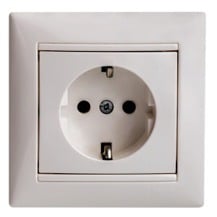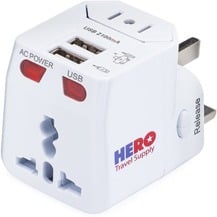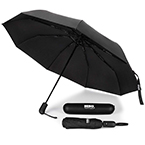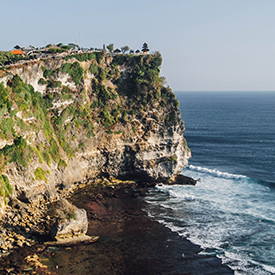Bali is an iconic tropical island that people around the world dream of visiting. And while many think of it as a luxury destination for honeymooners, it’s so much more; and outside the five-star resorts, it’s one of the world’s cheapest travel destinations. Incredibly diverse for such a small island, Bali is beloved by surfers, backpackers, spiritual seekers, Instagrammers, culture lovers, and more. But as part of Indonesia, Bali has the infrastructure typical of a developing country. Make sure you know what to expect and that you pack all the essentials.
US to Bali Power Adapter: What Plug Do I Need? (2025)
Which power outlets do they use in Bali?

Bali power outlet
Bali uses two main kinds of electrical outlets – Type C and Type F – which are both typical in Europe. Both of these outlet types have two round holes, but the difference is that Type C sockets are ungrounded, while Type F sockets also have grounding clips. They are both typically set inside a small circular indentation in the wall.
You may also find the British-style Type G outlets in Bali, which are grounded and have three rectangular holes, but they are less common.
As in the rest of Indonesia, the electrical grid in Bali uses a frequency of 50 Hz and a voltage of 230V.
What kind of power adapter do I need in Bali?

When you’re packing for your trip, one question you’ll probably be asking is, “What plug do I need for Bali?” To use your devices from home while you’re there, you’ll need a US to Bali power adapter with two round pins. This plug type will work with either Type C or Type F sockets. Keep in mind, though, that the head of the adapter will need to be able to fit into the circular indentation around the outlet. It’s not a bad idea to pack a universal power adapter for Bali, which will also allow you to plug your devices into Type G outlets and many other outlet types.
This is a high-quality Universal Adapter that we highly recommend. It’s compatible with your personal electronics (mobile phone, camera, laptop, tablet etc.) and works with plugs in over 100 countries around the world including Bali, Indonesia.
What’s the electricity and power supply like in Bali?
Bali was the first province in Indonesia to have every village connected to the power grid. However, as in the rest of the country, the electrical infrastructure still experiences some issues. Power outages occur with some frequency, and can be caused by excess strain on the system, poor maintenance of infrastructure, or severe storms. You may experience a power outage while you’re in Bali, but they usually don’t last long.
Do I need a voltage converter for Bali?
Because the US operates on a voltage of 120V and Bali uses 230V, you may need a US to Bali voltage converter in addition to your power adapter. However, many American personal electronic devices are dual voltage (110V-240V) – including phones, tablets, and laptops – and are designed to work on higher voltages, meaning they won’t require a converter in Bali. But certain high-powered appliances are rated to only 120V or 130V, including most irons, hairdryers, and electric razors produced in the US. Plugging in a device that’s not rated to a high enough voltage is dangerous; it will destroy the device, and it could start a fire or shock you. So if you plan to bring one of these items to Bali, you’ll need to pack a voltage converter as well. You also might consider buying dual-voltage versions of these high-powered appliances, which you can switch between 110/120V and 220/240V depending on where you are.
Other Bali Packing List Items
In addition to your US to Bali power adapter, these items will help you pack with intention and expand the possibilities of your getaway. Also, check out our Bali packing list for more inspiration and ideas.
-
1. Neck Wallet / Passport Pouch
Pickpocketing is an issue in certain areas of Bali, particularly in the more crowded southern beach towns. To prevent it from happening to you, bring a neck wallet with you to wear whenever you’re out and about. If you keep your valuables concealed, instead of in your bag or pocket, it’ll be much harder for someone to snatch them.
![Neck Wallet]()
-
2. Packing Cubes
Using packing cubes is one of the simplest ways to stay more organized while you travel. By folding or rolling clothes into a cube, instead of packing each item individually into your luggage, you’ll be able to pack more efficiently and it’ll be much easier to find things you’re looking for. Plus, when all your clothes are packed in cubes, your bag won’t explode the second you open it after a long trip.
![aqua packing cubes]()
-
3. Virtual Private Network (VPN)
The Indonesian government blocks access to certain websites, including Reddit and Tumblr. To access these and other blocked sites, you’ll need to install a VPN on your devices. But even if you’re not concerned about getting around censorship, it’s still smart to use a VPN when you’re traveling. Regularly logging onto public Wi-Fi networks can put your data at risk, and using a VPN will keep it safe.
![how a vpn works]()
-
4. Lipstick-Sized Charger
You’ll definitely want to have a smartphone with you in Bali, so you can use a mapping app to navigate the confusing streets, communicate with ride-share or taxi drivers, and take photos of your trip. But with all that use, your phone could easily run out of battery during a day out. To make sure that doesn’t happen, carry a small portable charger with you, so you can charge the battery wherever you go.
![Lipstick-Sized Charger]()
-
5. Windproof Travel Umbrella
-
6. Jet Lag Relief Pills
-
7. Travel Insurance for Bali
It’s always important to buy travel insurance when you go abroad since US health insurance normally won’t pay for treatment in other countries. A travel insurance plan will cover you if you get sick or injured in Bali and need to see a doctor, and will also pay for things like emergency evacuation. We like to use TravelInsurance.com because you can view a variety of policies from top companies. We like to choose a plan that not only covers medical expenses, but also cancellations, theft, and stolen items.
![travelinsurance.com]()
Other FAQs about traveling in Bali
-
1. When to travel to Bali?
It’s best to visit Bali during the dryer months if you can, as flooding is not uncommon in the rainy season and roads in more rural areas can get washed away. The rain also put a real damper on trekking, surfing, beach-going, and the other outdoor activities Bali is known for. Peak season for tourism is in July and August, and in a destination that’s this popular, it can get unbearably crowded during those months. For pleasant weather and fewer crowds, try to visit in May or September instead. Be sure to check current Bali travel advisories before you go.
-
2. What is the weather like in Bali?
Bali has a tropical climate and is typically hot and humid all year long. Most of the popular tourist destinations are along the coast, where this heat and humidity is especially pronounced, but the mountainous areas in the interior are much more comfortable. Even Ubud is typically a few degrees cooler than the beach towns. Bali’s temperatures barely fluctuate throughout the year, although May tends to be the hottest month, if only by a couple degrees. Instead, the island’s weather patterns are defined by a rainy season and a dry season. The rainy season lasts roughly from October to April, while the dry season is May through September.
-
3. What to do in Ubud?
Ubud is a small town, but it’s packed with things to do. As one of the world’s top destinations for wellness and spirituality, there are dozens of places to take yoga and meditation classes or try a new healing therapy. Ubud is the perfect place for a spa day as well, with some of the highest-quality and best value spas in Southeast Asia. You can also take a Balinese cooking class or classes in traditional painting, carving, or dance, and multiple cultural performances are usually held every night of the week, including the popular Kecak Fire Dance show.
There are several impressive temples in and around Ubud, including Tirta Empul (known as the Water Temple), which is well worth the 30-minute drive.
-
4. What to do in Bali?
Outside of Ubud, many of the top things to do in Bali revolve around the beach. The southwest coast has the most popular beach towns, including Kuta, Canggu, Seminyak, and Legian, which also have the island’s best surfing (especially for beginners). Diving is also popular in many parts of Bali, and most of the best dive sites are around Amed and Tulamben on the east coast. Another popular destination is Uluwatu in the far south, which is known for its rocky cliffs, secluded beaches, and mesmerizing temples, as well as waves for beginners and advanced surfers alike. Quieter and less crowded beach towns include Lovina, Candidasa, and Pemuteran, and you can also beat the crowds by heading up to towns like Munduk in the mountains. Finally, Bali also has some incredible hiking, including Mt. Batur, Mt. Lesung, and the trek through Sambangan (a forest also known as the Secret Garden).
-
5. How to get around in Bali?
Compared to other popular destinations in Southeast Asia, getting around Bali can be a challenge. The island’s “taxi mafia” have forced public transportation and ride-sharing into the shadows, where they exist at all. Both Grab and Indonesia-based Go-Jek operate across the island, but you often won’t be able to find a driver who will pick you up on more popular streets, including near the beaches. Drivers will also appreciate you being discreet when waiting for a pick-up, as there have been many stories of ride-share drivers being attacked by taxi drivers.
The less contentious but much more expensive option is to hire a private driver; most hotels or tour agencies will arrange one, and you can also find drivers looking for customers on any busy street. There’s almost no public transportation on Bali, but Perama Tour does operate shuttles between most of the top destinations. Some parts of the island also have bemos (open-air minibusses), or local shared taxis, but they’re notoriously difficult to use and don’t often serve the popular towns.
Many tourists rent motorbikes in Bali, which will allow you to bypass all the trouble with other transportation options. However, most of the roads are narrow and very crowded, and the traffic doesn’t follow any of the rules you might be used to. Riding a motorbike in Bali is really only recommended for those with experience.











 It’s best to visit Bali during the dryer months if you can, as flooding is not uncommon in the rainy season and roads in more rural areas can get washed away. The rain also put a real damper on trekking, surfing, beach-going, and the other outdoor activities Bali is known for. Peak season for tourism is in July and August, and in a destination that’s this popular, it can get unbearably crowded during those months. For pleasant weather and fewer crowds, try to visit in May or September instead. Be sure to check current
It’s best to visit Bali during the dryer months if you can, as flooding is not uncommon in the rainy season and roads in more rural areas can get washed away. The rain also put a real damper on trekking, surfing, beach-going, and the other outdoor activities Bali is known for. Peak season for tourism is in July and August, and in a destination that’s this popular, it can get unbearably crowded during those months. For pleasant weather and fewer crowds, try to visit in May or September instead. Be sure to check current  Ubud is a small town, but it’s packed with things to do. As one of the world’s top destinations for wellness and spirituality, there are dozens of places to take yoga and meditation classes or try a new healing therapy. Ubud is the perfect place for a spa day as well, with some of the highest-quality and best value spas in Southeast Asia. You can also take a Balinese cooking class or classes in traditional painting, carving, or dance, and multiple cultural performances are usually held every night of the week, including the popular Kecak Fire Dance show.
Ubud is a small town, but it’s packed with things to do. As one of the world’s top destinations for wellness and spirituality, there are dozens of places to take yoga and meditation classes or try a new healing therapy. Ubud is the perfect place for a spa day as well, with some of the highest-quality and best value spas in Southeast Asia. You can also take a Balinese cooking class or classes in traditional painting, carving, or dance, and multiple cultural performances are usually held every night of the week, including the popular Kecak Fire Dance show. Compared to other popular destinations in Southeast Asia, getting around Bali can be a challenge. The island’s “taxi mafia” have forced public transportation and ride-sharing into the shadows, where they exist at all. Both Grab and Indonesia-based Go-Jek operate across the island, but you often won’t be able to find a driver who will pick you up on more popular streets, including near the beaches. Drivers will also appreciate you being discreet when waiting for a pick-up, as there have been many stories of ride-share drivers being attacked by taxi drivers.
Compared to other popular destinations in Southeast Asia, getting around Bali can be a challenge. The island’s “taxi mafia” have forced public transportation and ride-sharing into the shadows, where they exist at all. Both Grab and Indonesia-based Go-Jek operate across the island, but you often won’t be able to find a driver who will pick you up on more popular streets, including near the beaches. Drivers will also appreciate you being discreet when waiting for a pick-up, as there have been many stories of ride-share drivers being attacked by taxi drivers.